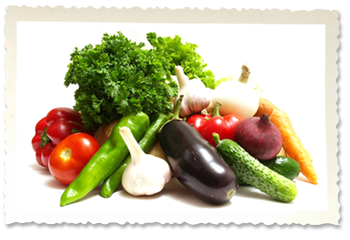Environment and Home

Additives and Preservatives to Avoid
Additive side effects are more common than most people realize because they are usually attributed to symptoms of diseases and are treated as such. Listed below are symptoms and the additives that may have been the culprits.
Asthma: Acacia; acetal; allyl sulphide; benzoic acid; potassium nitrate; propyl gallate; sodium nitrite; sodium, potassium and calcium benzoate; sodium sulphite (and all other sulphites); tartazine (or other azo or "coal tar" dyes).
Blurred Vision: Tartrazine (or other azo dyes).
Constipation: Aluminum hydroxide.
Depression: Benzaldehyde; benyl alcohol; calcium disodium EDTA; mannitol; monopotasium glutamate; potassium bromate; sorbitol syrup.
Diarrhea: Benzaldehyde; benzyl alcohol; butyl acetate.
Dizziness: MSG; sodium and other nitrates.
Flatulence and Bloating: Agar agar; guar gum; pectin; sorbitol; sorbitol syrup.
Hay Fever: Cornstarch; tartrazine (or other azo dyes).
Headaches: Glycerol; MSG; sodium nitrite and other nitrites; sodium propionate.
Heart Problems: Acetal; calcium chloride; calcium gluconate; coconut oil; sodium carbonate; sodium sulphate.
High Blood Pressure: Acetal; Indigo Carmine (or other coal tar" dyes); MSG.
Inflamed/Ulcerated Colon: Carrageenan.
Liver Problems: Allyl sulfide; ammonium chloride; propyl gallate (and all alkyl gallates).
Nausea: Ammonium and potassium chloride; biphenyl (diphenyl); glycerol; guar gum; mannitol; monopotassium glutamate; MSG; sodium and other nitrites; synthetic "coal tar" or azo dyes.
Raised Cholesterol Levels: BHA; BHT.
Sensitivity to Light: Angelica; bergamot; cedar leaf oil; clover; erythrosine (a "coal tar" or azo dyes).
Skin Rashes: Acacia; acetic acid; alkyl sulphates; benzoic acid; benzoyl peroxide; cinnamon bark extract and oil; polyoxyethylene stearates; sodium metabisulphite (and other sulphites); sorbic acid; tartrazine ( or other azo or "coal tar" dyes).
|
Preservatives |
Common Sources |
|
Sodium nitrate |
Processed meats, wieners, sausages, bacon |
|
Sodium sulphate |
Beer, wine, jam, marmalade, pickles, relishes, fresh and dried fruits, vegetables, tomato paste, mincemeat |
|
Colouring and Dyes |
Common Sources |
Cleaning Tips for Better Health, Environment and Savings
Many common synthetic cleaning products, together with other harmful environmental agents, are considered a contributing cause of many modern illnesses. This includes some of the most prevalent childhood illnesses such as asthma, ADD, hyperactivity disorders or allergies.
There is also growing evidence that synthetic cleaning agents contribute to the weakening of our metabolism and increased proliferation of auto-immune illnesses and cancers.
If that wasn't enough reason, you'll also save a good deal of money. Most cleaning can be achieved with baking soda, borax, salt, pumice, vinegar, lemon juice, water and a little "elbow grease". So round up a few containers, pre-mix these cleanser recipes and be ready for anything!
Stain Removal
Greasy stains:Fresh stain: Use a toothbrush with either salt, white chalk or baking soda to absorb the grease.
Greasy stains: Dried stain: Mix warm water and lemon juice then make a paste of either salt or baking soda and apply with a toothbrush.
Stains on carpet: Borax or vinegar with soapy water.
Coffee: Use a toothbrush and vinegar or soak in vinegar and rinse in seltzer.
Sweat: Lemon juice or vinegar applied to the clothing, then washed normally. (In some countries, lemon juice is the preferred antiperspirant!).
Glass/Tile/Countertops: Mix water and vinegar in a 10 to 1 ratio. Increase the vinegar ratio if the area to be cleaned is excessively dirty.
Dishes: Soda or vinegar in the water will cleanse and cut grease.
Sinks/Bath/Tubs/Toilets: Sprinkle borax or baking soda around the toilet bowl as you would other dry cleansers. For other surfaces where a paste would be better, mix water with borax or baking soda to your preferred consistency, and add a bit of lemon if desired.
Furniture Cleaner/Polish: 1 cup mineral oil, 1 teaspoon lemon oil OR 2 tablespoons olive oil, 1 tablespoon vinegar, 4 cups warm water
Mix and store in a spray bottle, and warm up slightly before use for best results.
Laundry
Automatic Washing Machines: 1 cup soap flakes, 1 cup borax or washing soda. Mix together. Use 1 cup of mixture per load and wash as usual. Rinse in cold water.
Delicate Care Soap (hand washing): 1/2 cup borax, 1 cup soap flakes, 4 cups boiling water. Combine and let cool. Use about 1 cup of solution to 4 litres of water.
Fabric Softener (softening only, does not eliminate static): 2 cups vinegar, 2 cups baking soda, 4 cups water. Mix together. Add 1/4 cup to the final rinse cycle
Top 10 Reasons to Buy Organic

A safe alternative to foods exposed to chemicals, and irraditation.
- Protect Future Generations: The average child receives four times more exposure than an adult to at least eight widely used cancer-causing pesticides in food. The food choices you make today will impact your child's health in the future.
- Prevent Soil Erosion: Soil is the foundation of the food chain in organic farming. In conventional farming, however, the soil is used as a medium to hold the plants in a vertical position so they can be chemically fertilized. As a result, farms are suffering from the worst soil erosion in history.
- Protection of Water Quality: Pesticides contaminate ground water in numerous provinces, polluting the primary source of drinking water for millions of North Americans.
- Save Energy: Modern farming uses more petroleum than any other single industry, consuming 12 % of the country's total energy supply. Organic farming is primarily based on labor-intensive practices such as weeding by hand, using green manures and crop covers rather than synthetic fertilizers.
- Keep Chemicals off Your Plate: Pesticides are poisons designed to kill living organisms, and can also be harmful to humans. In addition to cancer, pesticides are implicated in birth defects, nerve damage and genetic mutation.
- Protect Farm Worker Health: A National Cancer Institute study found that farmers exposed to herbicides had a six times greater risk than non-farmers of contracting cancer. In developing nations pesticides can be poorly regulated. An estimated 1 million people are poisoned annually by pesticides.
- Help Small Farmers: Although more and more large- scale farms are making the conversion to organic practices, most organic farms are small, independently owned and operated family farms of less than 100 acres.
- Support A True Economy: Although organic foods might seem more expensive, conventional food prices do not reflect hidden costs such as subsides borne by the taxpayer. Other hidden costs include pesticide regulation and testing, hazardous waste disposal and clean-up, and environmental damage.
- Promote Biodiversity: Mono-cropping is a practice of planting large plots of land with the same crop year after year. While this approach tripled farm production between 1950 and 1970, the lack of natural diversity of plant life has left the soil lacking in natural minerals and nutrients. To replace the nutrients, chemical fertilizers are used, often in increasing amounts. Single crops are also much more susceptible to pests, making farmers more reliant on pesticides. Despite a 10 fold increase in the use of pesticides between 1947 and 1974, crop losses due to insects have doubled - partly because some insects have become genetically resistant to certain pesticides.
- Tastes Better and Stores Nutrients: There is good reason why many chefs use organic foods in their recipes. Because of the nourishment of the soil, organic foods offer greater amounts of vitamins, minerals and better flavour than conventional foods.
Disclaimer: The goal of this website is to inform patients and potential patients on the benefits of Naturopathic Medicine. It is not to be considered as medical advice without a physical exam, medical history and appropriate laboratory work up. Dr. Reina Persaud, BSc, ND does not assume any responsibility of how the information on this site is used.